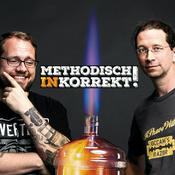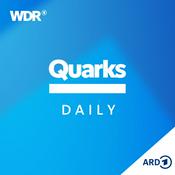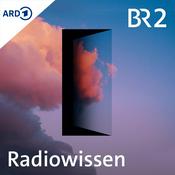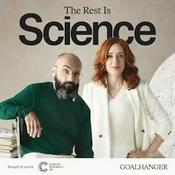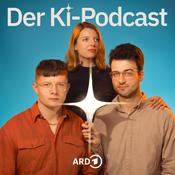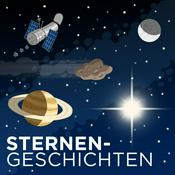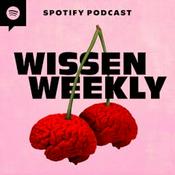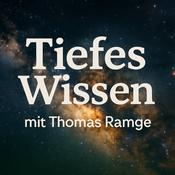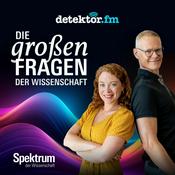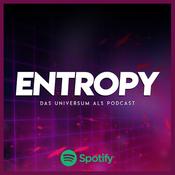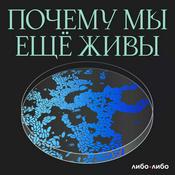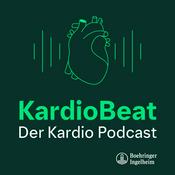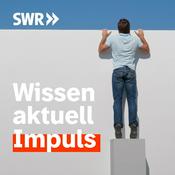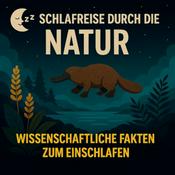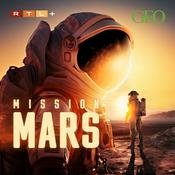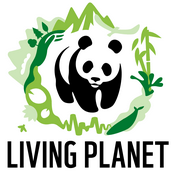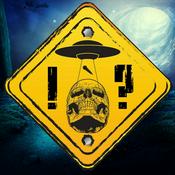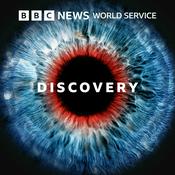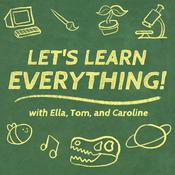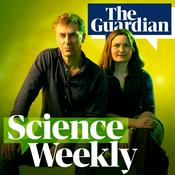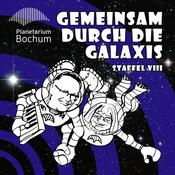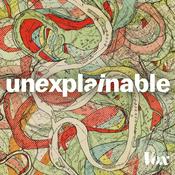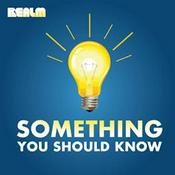Rund um Hund - dein Podcast aus dem Treuhundbüro
Christoph Siegenthaler vom Treuhundbüro (treuhund.ch)
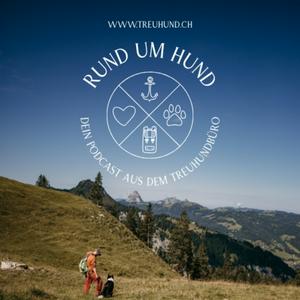
Neueste Episode
Verfügbare Folgen
5 von 106
- Leinenaggression - Interview mit Hundetrainerin Sonja MeiburgIn dieser Folge geht es um ein Thema, das im Hundetraining relativ oft ein Thema ist: Leinenaggression. Gerade für Menschen mit Hunden, die Leinenaggression zeigen, sind die Spaziergänge dann eine echte Herausforderung, Hundebegegnungen eine schier unüberwindbare Hürde.Um dieses doch komplexe Thema anzugehen, habe ich eine Expertin mit vielen Jahren Erfahrung eingeladen: Hundetrainerin Sonja Meiburg.SONJA MEIBURGist seit mehreren Jahrzehnten Hundetrainerin, Mitglied bei "Trainieren statt dominieren" und war damals Initiatorin der Aktion "Tausche Stachelhalsband gegen Training". Sie führt nicht nur ihre eigene Hundeschule in Holledau und die Hundetrainings-Plattform hey-fiffi.com, sondern steht auch für den Bayerischen Rundfunk als Expertin für Hunde vor der Kamera. Zu Sonja's HundeschuleZu hey-fiffi.comZur Sendung "Wir in Bayern"DAS TREUHUNDBÜROAlles für ein harmonisches Leben mit deinem Hund.Zur WebsiteZum Instagram-Profil--------57:14
- Über StatusaggressionImmer wieder begegnet man im Hundetraining dem Begriff "Statusaggression". Der Hund, so die geläufige Definition, wolle seinen Rang oder Status mittels Aggressionsverhalten verteidigen oder gar ausbauen.Doch gibt es sowas wie Statusaggression bei Hunden überhaupt? Zeigen Hunde status-bezogenes Aggressionsverhalten auch gegenüber Menschen? Und ist Statusaggression wissenschaftlich fundiert?Diese Fragen (und weitere) versuche ich in dieser Folge von Rund um Hund zu beantworten.QUELLENAbrantes, Roger. "On Aggression and Dominance—A Critical Review." (2017).American Veterinary Society of Animal Behavior. "Position Statement on the Use of Dominance Theory in Behavior Modification of Animals." AVSAB, 2008, https://avsab.org/wp-content/uploads/2019/01/Dominance_Position_Statement-download.pdf. Accessed 17 Nov. 2025.Bamberger, Michelle, and Katherine A. Houpt. "Signalment factors, comorbidity, and trends in behavior diagnoses in dogs: 1,644 cases (1991–2001)." Journal of the American Veterinary Medical Association 229.10 (2006): 1591-1601.Beaver, Bonnie V. "Aggressive behavior problems." Veterinary Clinics of North America: Equine Practice 2.3 (1986): 635-644.Bradshaw, John WS, Emily J. Blackwell, and Rachel A. Casey. "Dominance in domestic dogs—useful construct or bad habit?." Journal of Veterinary Behavior 4.3 (2009): 135-144.Bradshaw, John WS, Emily-Jayne Blackwell, and Rachel A. Casey. "Dominance in domestic dogs—A response to Schilder et al.(2014)." Journal of Veterinary Behavior 11 (2016): 102-108.Brain, Paul F., and Sami Al-Maliki. "Effects of lithium chloride injections on rank-related fighting, maternal aggression and locust-killing responses in naive and experienced ‘TO’strain mice." Pharmacology Biochemistry and Behavior 10.5 (1979): 663-669.Curtis, Terry Marie. "Human-directed aggression in the cat." Veterinary Clinics of North America: Small Animal Practice 38.5 (2008): 1131-1143.Grewe, Michael. “Aggressionen.” CANIS – Zentrum für Kynologie, 2005, https://www.canis-kynos.de/documents/artikel_aggressionen_1455792770.pdf. Accessed 17 Nov. 2025Houpt, Katherine A., and Thomas R. Wolski. "Stability of equine hierarchies and the prevention of dominance related aggression." Equine Veterinary Journal 12.1 (1980): 15-18.Hsu, Yuying, and James A. Serpell. "Development and validation of a questionnaire for measuring behavior and temperament traits in pet dogs." Journal of the American Veterinary Medical Association 223.9 (2003): 1293-1300.Line, Scott, and Victoria L. Voith. "Dominance aggression of dogs towards people: behavior profile and response to treatment." Applied Animal Behaviour Science 16.1 (1986): 77-83.Overall, Karen. Manual of Clinical Behavioral Medicine for Dogs and Cats-E-Book: Manual of Clinical Behavioral Medicine for Dogs and Cats-E-Book. Elsevier Health Sciences, 2013.Peterson, Rolf O., et al. "Leadership behavior in relation to dominance and reproductive status in gray wolves, Canis lupus." Canadian Journal of Zoology 80.8 (2002): 1405-1412.Siracusa, Carlo. "Status-related aggression, resource guarding, and fear-related aggression in 2 female mixed breed dogs." Journal of Veterinary Behavior 12 (2016): 85-91.Trisko, Rebecca K., and Barbara B. Smuts. "Dominance relationships in a group of domestic dogs (Canis lupus familiaris)." Behaviour 152.5 (2015): 677-704.van der Borg, Joanne AM, et al. "Dominance in domestic dogs: a quantitative analysis of its behavioural measures." PLoS One 10.8 (2015): e0133978.Voith, Victoria L., and Peter L. Borchelt. "Diagnosis and treatment of dominance aggression in dogs." (1982): 655-663.Wynne, Clive DL. "The indispensable dog." Frontiers in Psychology 12 (2021): 656529.DAS TREUHUNDBÜROAlles für ein harmonisches Leben mit deinem Hund.Zur WebsiteZum Instagram-Profil--------40:43
- Ein guter Start ins gemeinsame Leben - Interview mit Florine & Xenia von der Hundeschule OHANAGerade wenn ein Welpe einzieht, ist das auch für erfahrene Hundemenschen oftmals eine aufregende, aber auch von vielen Fragen geprägte Zeit: Wie viel Auslastung braucht ein Welpe? Wann starte ich das Training? Muss ich in eine Hundeschule – und wenn ja, in welche? Um diese Fragen zu beantworten, habe ich zwei wunderbare Hundetrainerinnen eingeladen: Florine Ermatinger und Xenia Baumann von der Hundeschule OHANA.XENIA BAUMANN & FLORINE ERMATINGERXenia ist Hundetrainerin, Verhaltenstherapeutin und Assistenzhundetrainerin.Florine ist studierte Biologin (MSc), ausgebildete Hundetrainerin und Verhaltenstherapeutin.Gemeinsam führen sie die Hundeschule OHANA im Aargau und in Zürich. Sie legen grossen Wert auf wissenschaftlich fundierte, bedürfnisorientierte Methoden und passen das Training flexibel und kreativ an die Bedürfnisse jedes einzelnen Mensch-Hund-Teams an.Dabei arbeiten sie mit Hunden mit unterschiedlichsten Verhaltensherausforderungen – von Aggressions- und Angstverhalten über Jagdverhalten bis hin zu Alltagsproblemen – und entwickeln individuelle, nachhaltige und alltagstaugliche Lösungen.Zur WebsiteZum Instagram-AccountZum YouTube-KanalTREUHUND TAGE 2026Florine & Xenia kannst du an den TREUHUND TAGEN am 15. März 2026 auch live erleben! Von 14:00 Uhr bis 15:30 Uhr werden sie dabei zum Thema Hundetraining vs. Verhaltenstherapie sprechen.Zu den TREUHUND TAGENDAS TREUHUNDBÜROAlles für ein harmonisches Leben mit deinem Hund.Zum Kurs LEINE MACHT LAUNEZum Kurs CALM YOUR DOGZum Kurs MEIN HUND, DER JÄGERZur WebsiteZum Instagram-Profil--------56:45
- Selbstwirksamkeit bei HundenHuch - eine andere Stimme? Du hörst richtig! Für diese Folge hat Amanda vom Treuhundbüro den Podcast gekapert und erzählt dir viel Wissenswertes rund um Selbstwirksamkeit!Denn Selbstwirksamkeit wird immer mehr ein Thema im Hundetraining. Bei vielen Trainerkolleg:innen fällt dieses Wort. Doch oftmals wissen wir Hundemenschen gar nicht so genau, was damit gemeint ist. Was ist Selbstwirksamkeit überhaupt? Woher stammt dieses Prinzip? Und wie können wir Selbstwirksamkeit bei Hunden fördern?Diese Fragen und mehr beantworten Amanda in dieser Folge. Dabei ist Amanda nahezu prädestiniert, darüber zu sprechen: Sie ist nicht nur zertifizierte Hundetrainerin, sondern auch studierte Pädagogin und hat über ein Jahrzehnt stellenlose Jugendliche auf ihrem Weg in den Arbeitsmarkt begleitet und kennt Selbstwirksamkeit als Prinzip aus den unterschiedlichsten Bereichen.LINK SELBSTTESTZum TestVON DER BELOHNUNG ZUM VERHALTENZum WebinarQUELLENBandura, Albert. "Self-efficacy: toward a unifying theory of behavioral change." Psychological review 84.2 (1977): 191.Casey, Rachel A., et al. "Dogs are more pessimistic if their owners use two or more aversive training methods." Scientific Reports 11.1 (2021): 19023.Wilson, Robert C., et al. "The eighty five percent rule for optimal learning." Nature communications 10.1 (2019): 4646.DAS TREUHUNDBÜROAlles für ein harmonisches Leben mit deinem Hund.Zum Kurs LEINE MACHT LAUNEZum Kurs CALM YOUR DOGZum Kurs MEIN HUND, DER JÄGERZur WebsiteZum Instagram-Profil--------36:09
- Persönlichkeit bei Hunden - Interview mit Dr. Maya Bräm"Mein Hund ist stur!", "Er ist halt einfach ängstlich!" - Aussagen wie diese beschreiben vermeintlich die Persönlichkeit eines Hundes. Doch haben Hunde überhaupt individuelle Persönlichkeiten? Und wenn ja, welchen Einfluss hat die Persönlichkeit eines Hundes auf sein Verhalten?Diese und weitere Fragen beantwortet Dr. Maya Bräm. Maya hat zu Persönlichkeit bei Hunden, insbesondere Hochsensibilität, geforscht. Daneben ist Maya die einzige in der Schweiz ansässige europäisch diplomierte Verhaltenstierärztin. Im Interview erzählt sie, wie die Persönlichkeit bei Hunden erforscht werden, welchen Einfluss die Persönlichkeit auf Verhalten hat und wie wir die Persönlichkeit im Umgang mit unseren Hunden berücksichtigen können.INFOMaya ist ab dem 13. November 2025 in der Sendung "Einstein" des Schweizer Radio und Fernsehens SRF zum Thema "Verhaltensprobleme beim Hund" zu sehen.Zur SRF-Sendung "Einstein"Zudem wird Maya am 14. März 2026 an den TREUHUND TAGEN zum Thema "Die Wichtigkeit der Individualität des Hundes" sprechen.Zu den Treuhund TagenDR. MAYA BRÄMZur WebsiteMAYA'S ARBEITENBraem Maya (2024) Sensory Processing Sensitivity and the Importance of Individuality and Personality in Veterinary Medicine, Vet Clin North Am Small Anim Pract, 54, 181-193.Bräm Dubé M, Asher L, Würbel H, Riemer S, Melotti L (2020) Parallels in the interactive effect of highly sensitive personality and social factors on behaviour problems in dogs and humans, Scientific Reports.Bräm, M., Doherr, M. G., Lehmann, D., Mills, D., & Steiger, A. (2008). Evaluating aggressive behavior in dogs: a comparison of 3 tests. Journal of Veterinary Behavior, 3(4), 152-160.DAS TREUHUNDBÜROAlles für ein harmonisches Leben mit deinem Hund.Zum Kurs LEINE MACHT LAUNEZum Kurs CALM YOUR DOGZum Kurs MEIN HUND, DER JÄGERZur WebsiteZum Instagram-Profil--------1:07:21
Weitere Wissenschaft Podcasts
Trending Wissenschaft Podcasts
Über Rund um Hund - dein Podcast aus dem Treuhundbüro
Alles rund um den Hund: Hundetraining, Hundewissen(schaft), Trainingstipps, Schabernack und Allerlei aus der Hundewelt.
Für Menschen, die ihren Hund verstehen, unterstützen und ihn fair und gewaltfrei trainieren wollen. Für Hundehaltende, die sich gerne über das Wesen, das Leben und das Verhalten ihres Hundes informieren. Und für alle, die vielleicht gerade eine Herausforderung mit ihrem Hund haben.
Mehr auf www.treuhund.ch.
Podcast-WebsiteHöre Rund um Hund - dein Podcast aus dem Treuhundbüro, NEU DENKEN und viele andere Podcasts aus aller Welt mit der radio.de-App

Hol dir die kostenlose radio.de App
- Sender und Podcasts favorisieren
- Streamen via Wifi oder Bluetooth
- Unterstützt Carplay & Android Auto
- viele weitere App Funktionen
Hol dir die kostenlose radio.de App
- Sender und Podcasts favorisieren
- Streamen via Wifi oder Bluetooth
- Unterstützt Carplay & Android Auto
- viele weitere App Funktionen


Rund um Hund - dein Podcast aus dem Treuhundbüro
Code scannen,
App laden,
loshören.
App laden,
loshören.

